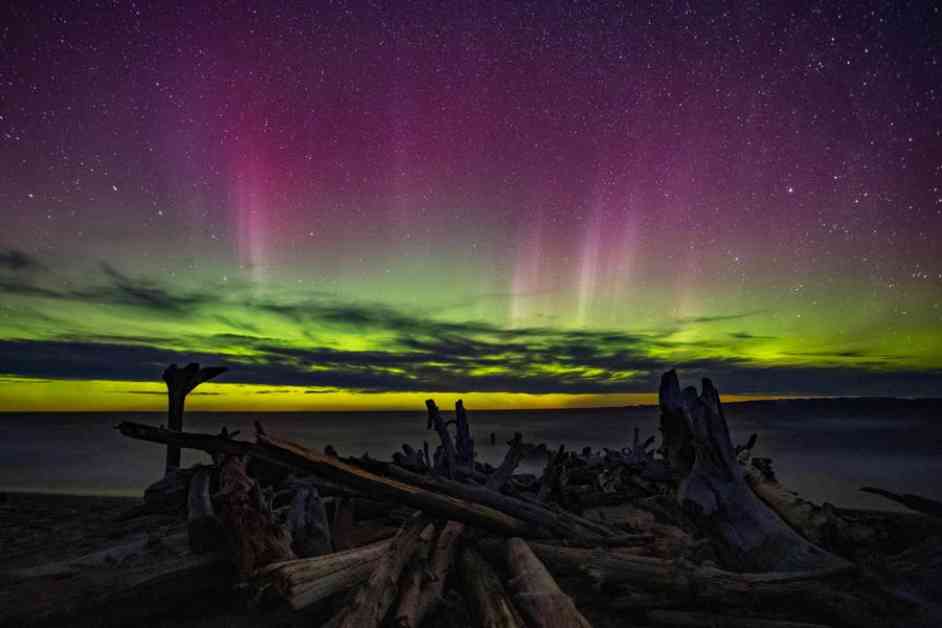If you’re a fan of the stunning natural phenomenon known as the northern lights, you might want to start planning your next trip to one of the best places to see them in the United States. While there may not be any major geomagnetic activity expected this week, recent solar flares and coronal mass ejections have put North America on high alert for a potential aurora show.
To get the best view of the northern lights, it’s important to escape urban light pollution by heading to a location at least 40 miles away from city lights. Another great option is to book a campsite in an International Dark Sky Park, where you can enjoy optimal stargazing conditions. While it’s possible that the aurora could be visible across the entire U.S., it’s more likely that northern states will have the best views.
Here is a list of 20 dark-sky locations in the northern and northeastern U.S. where you might catch a glimpse of the aurora if there’s a strong geomagnetic storm and clear skies:
– Lassen Volcanic National Park, California
– Redwood National and State Parks, California
– Craters Of The Moon National Monument International Dark Sky Park, Idaho
– AMC Maine Woods, Maine
– Acadia National Park, Maine
– Katahdin Woods and Waters National Monument Dark Sky Sanctuary, Maine
– Isle Royale National Park and Preserve, Michigan
– Dr. T.K. Lawless County Park, Michigan
– Keweenaw Dark Sky Park, Michigan
– Headlands International Dark Sky Park, Michigan
– Voyageurs National Park Dark Sky Park, Minnesota
– Glacier National Park Dark Sky Park, Montana
– Adirondack Sky Center & Observatory, New York
– Theodore Roosevelt National Park, North Dakota
– Crater Lake National Park, Oregon
– Oregon Outback International Sky Sanctuary, Oregon
– Cherry Springs State Park, Pennsylvania
– Badlands National Park, South Dakota
– North Cascades National Park, Washington
– Newport State Park Dark Sky Park, Wisconsin
The aurora borealis, which appear as red, green, and blue lights in the night sky, are caused by charged particles from the sun interacting with Earth’s magnetic field. The colors of the aurora are a result of these particles colliding with oxygen and nitrogen molecules in Earth’s ionosphere, hundreds of miles above the surface.
The recent surge in aurora activity can be attributed to the solar cycle, which lasts approximately 11 years and influences the sun’s magnetic activity. May has seen a peak in solar activity, with numerous sunspots and solar flares contributing to the potential for stunning aurora displays.
For more information on stargazing and upcoming celestial events, be sure to check out books like “Stargazing in 2024,” “A Stargazing Program For Beginners,” and “When Is The Next Eclipse?” Whether you’re a seasoned stargazer or a novice astronomer, clear skies and amazing sights await you at these top northern lights viewing locations in the U.S.
